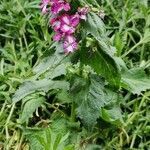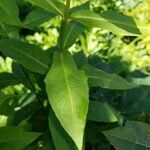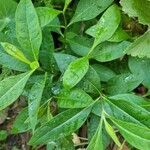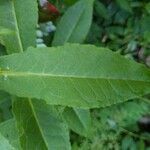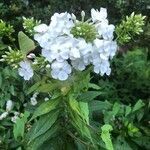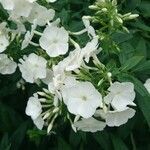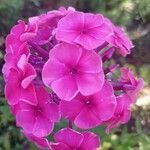Erect, to 2 m; lvs narrowly oblong to lanceolate or elliptic, 8–15 cm, to two-fifths as wide, acuminate, ciliolate, usually glabrous above, the conspicuous lateral veins confluent to form a submarginal connecting vein; infl often large, of several panicled cymes, densely short-hairy; cal glabrous, or the tube puberulent; cor red-purple, varying to white, 1.5–2 cm wide, the tube usually sparsely hairy; one or more anthers at least partly exsert from the cor-tube; style elongate; 2n=14. Rich moist soil; s. N.Y. to n. Ga., w. to Ill., Mo. and Ark., and often escaped from cult. elsewhere in our range. July–Sept.
